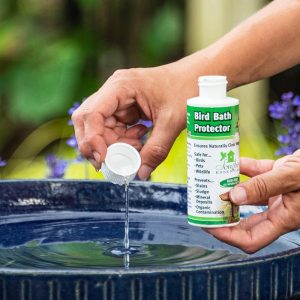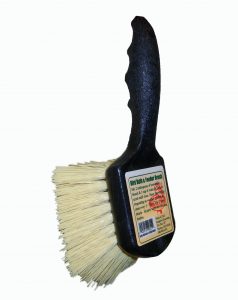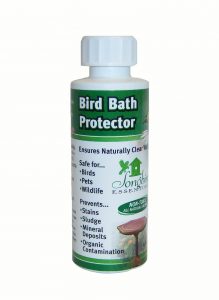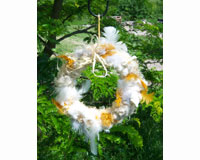© NestWatch / The Cornell Lab of Ornithology / https://nestwatch.org/learn/all-about-birdhouses/dealing-with-predators/
| Species | Nesting Habitat | Box Height | Hole Size | Minimum Spacing |
|---|---|---|---|---|
| American Kestrel | Pastures, fields, meadows, or orchards with mowed or grazed vegetation; place boxes on lone trees in fields, on trees along edges of woodlots, and on farm buildings. Facing south or east | 10-30 feet | 3″ diameter | 1/2 mile |
| Ash-throated Flycatcher | Chaparral, mesquite thickets, oak scrub, dry plains spotted with trees or cacti, deserts, and open deciduous and riparian woodlands | 3-20 feet | 1 3/4″ round | 200 feet |
| Barn Owl | Prefers open areas like fields, deserts and marshes which are in close proximity to hollow trees, cliffs, riverbanks, or man-made structures, including barns, bridges and other accessible sites, and which support healthy rodent populations | 8-25 feet | 3 3/4″ x 4 1/2″ elliptical | 100 feet |
| Black-capped Chickadee | Forests, woodlots, and yards with mature hardwood trees, forest edges, meadows; area should receive 40-60% sunlight, hole should face away from prevailing wind; 1″ wood shavings can be placed in box | 5-15 feet | 1 1/8″ round | 650 feet |
| Brown-headed Nuthatch | Open stands of pine-hardwood forests, clearings scattered with dead trees, forest edges, burned areas, cypress swamps | 5-10 feet | 1″ round | 1 box per 6 acres |
| Carolina Chickadee | Forests, woodlots, and yards with mature hardwood trees, forest edges, meadows; area should receive 40-60% sunlight, hole should face away from prevailing wind. Unlike other chickadees, Carolina Chickadee does not do much excavating, so wood chips are not necessary. | 4-15 feet | 1 1/8″ round | 30 feet |
| Carolina Wren | Forests with thick underbrush, forest edges, woodland clearings, open forests, shrub lands, suburban gardens, parks, backyards; near trees or tall shrubs | 3-6 feet | 1 1/2″ round, or 2 1/2″ x 5″ slot | 330 feet |
| Chestnut-backed Chickadee | Coniferous forests, mixed deciduous-coniferous forests, forest edges, woodlands, thickets, burned areas, often near streams; hole should face away from prevailing wind; 1″ wood shavings can be placed in box | 5-15 feet | 1 1/8″ round | 160 feet |
| Common Goldeneye | Breeding habitat is limited to aquatic areas with dead trees, in boreal, deciduous, aspen and montane woods; favor calm, large, clear lakes without much vegetation or fish. Please several inches of wood shavings in the box in early spring. | 6-30 feet | 3 1/4″ high x 4 1/4″ wide | 2/3 mile |
| Eastern Bluebird | Open field or lawn; orchards; open, rural country with scattered trees and low or sparse ground cover; entrance hole should face open field, preferring east, north, south, and then west-facing directions | 3-6 feet | 1 1/2″ diameter (round), or 2 1/4″ high x 1 3/8″ wide (oval) | 300 feet |
| Eastern Screech-Owl | Forests, parks, woodland clearings, forest edges, wooded stream edges, under a tree limb. Add 2″-3″ of wood shavings | 10-30 feet | 3″ round | 100 feet |
| European Starling | Habitat generalists, nesting in areas ranging from rural and agricultural to suburban and urban areas, but they avoid heavily wooded, mountainous, and arid regions | providing nest boxes is discouraged for this species in the U.S. | can squeeze through holes with 1 9/16″ diameter | 5 feet |
| Great Crested Flycatcher | Deciduous or mixed deciduous-coniferous forests, forest edges, woodlots, orchards, parks, on post or tree at forest edge | 3-20 feet | 1 3/4″ round | 1 box per 6 acres |
| Hooded Merganser | Quiet, shallow, clear water pools surrounded by or near the edge of deciduous woods: small forest pools, ponds, swamps; add 3″ of wood shavings; add ladder under inside of entrance hole for young to climb out | 6-25 feet | 3″ high by 4″ wide horizontal oval | 100 feet |
| House Sparrow | Agricultural, suburban, and urban areas; tend to avoid woodlands, forests, grasslands, and deserts | providing nest boxes is discouraged for this species in the U.S. | can fit through holes with 1 1/4″ diameter | variable |
| House Wren | Variety of habitats, farmland, openings, open forests, forest edges, shrub lands, suburban gardens, parks, backyards; near trees or tall shrubs | 5-10 feet | 1″ round | 100 feet |
| Mountain Bluebird | Open field or lawn; orchards; open, rural country with scattered trees and low or sparse ground cover; will also use deciduous and coniferous forest edges; entrance hole should face open field, preferring east, north, south, and then west-facing directions | 4-6 feet | 1 9/16″ diameter | 300 feet |
| Mountain Chickadee | Coniferous forests, forest edges, woodland clearings; hole should face away from prevailing wind; 1″ wood shavings can be placed in box | 5-15 feet | 1 1/8″ round | 1 box per 10 acres |
| Northern Flicker | Pastures, groves, woodlots, orchards, fields, meadows, woodland clearings, forest edges, urban parks, on pole or tree at forest edge or along fence rows bordering crop fields; south or east facing; box should be completely filled with wood chips or shavings | 6-12 feet | 2 1/2″ round | 330 feet |
| Prothonotary Warbler | Lowland hardwood forests subject to flooding, stagnant water, swamps, ponds, marshes, streams, flooded river valleys, wet bottomlands; box should be over or near water | 4-12 feet | 1 1/4″ round | 235 feet |
| Purple Martin | Broad open areas (meadows, fields, farmland, swamps, ponds, lakes, rivers) with unobstructed space for foraging on flying insects; there should be no trees or buildings within 40 feet of the martin pole in any direction; houses should be painted white | 10-15 feet | 2 1/8″ round or 3″ wide x 1 3/16″ high crescent | 10 feet |
| Red-breasted Nuthatch | Mixed coniferous-deciduous forests, shrub lands, swamps, farmlands, suburban parks; hole should face away from prevailing wind; 1″ wood shavings can be placed in box | 5-15 feet | 1 1/4″ round | 150 feet |
| Tree Swallow | Open fields near water, expansive open areas, marshes, meadows, wooded swamps; on a post in open areas near tree or fence, east facing | 5-6 feet | 1 3/8″ round | 35 feet |
| Tufted Titmouse | Deciduous forest, thick timber stands, woodland clearings, forest edges, woodlots, riparian and mesquite habitats; hole should face away from prevailing wind | 5-15 feet | 1 1/4″ round | 580 feet |
| Violet-green Swallow | Open or broken deciduous or mixed deciduous-coniferous forests, wooded canyons, edges of dense forest | 9-15 feet | 1 3/8″ round | 30 feet |
| Western Bluebird | open field or lawn; orchards; open, rural country with scattered trees and low or sparse ground cover; will also use deciduous and coniferous forest edges; entrance hole should face open field, preferring east, north, south, and then west-facing directions | 4-6 feet | 1 1/2″ diameter | 215 feet |
| Western Screech-Owl | Lower elevations, forests, parks, woodland clearings, forest edges, deserts, wooded stream edges, under a tree limb, south or east facing. Add 2″-3″ of wood shavings | 10-30 feet | 3″ round | 1,000 feet |
| White-breasted Nuthatch | Deciduous woodlands, mature forests, woodlots, near open areas, forest edges, orchards, often near water; hole should face away from prevailing wind; 1″ wood shavings can be placed in box | 5-20 feet | 1 1/4″ round | 1,040 feet |
| Wood Duck | Forested wetlands or near marshes, swamps, and beaver ponds; boxes can be installed on posts or poles in water, at least 3 feet above the high water mark, facing south or west. If installing on land, choose a site within 100 feet of water with no branches near the entrance hole and with a predator guard. Place 4 inches of wood shaving in box floor. Box should have fledgling ladder inside entrance hole to enable young to climb out. | 6-30 feet | 4″ wide, 3″ high | 600 feet |






